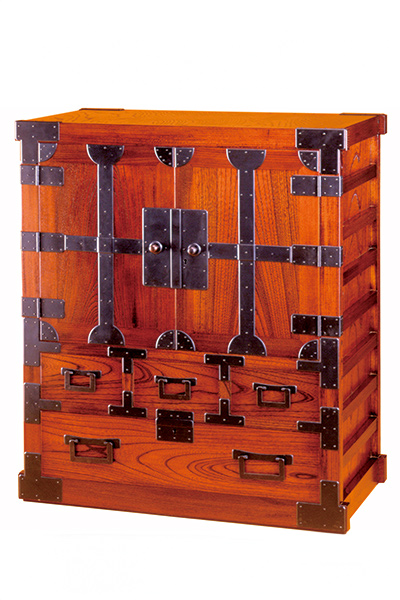MATSUMOTO Kagu (Furniture)

Matsumoto furniture developed in the latter half of the 16th century in what is now Nagano Prefecture. However, it was not until the end of the Edo era (1600-1868) that the production of household furniture began.
At first, chests, china cupboards and tables were produced to meet the needs of the people living in and around Matsumoto. But with the development of transportation, the furniture could be sold farther away, and soon the town became known nationwide as a furniture production center.
Work of the finest craftsmanship is used to produce a broad range of solid wood pieces, which are assembled using traditional joining techniques. Matsumoto furniture is very sturdy, and even the work on parts not visible from the outside is extremely precise. Wiped on with a cloth, the finish is often a coating of natural lacquer, which shows off the beauty and warmth of the woodgrain. Pieces produced today include various kinds of chests, shelves and tables.
Feature
Matsumoto furniture is assembled from solid wood using traditional methods with the greatest of skill and care. The resulting pieces are sturdy and long-lasting, with great attention devoted to the finest details, many of which cannot be seen from the outside. The finishing lacquer further enhances the natural beauty and warmth of the underlying wood.
How to make
Matsumoto furniture is made from the wood of a variety of trees, including zelkova, oak and cherry-birch. The process of building each piece of furniture is handled by a single craftsman. A wide variety of wood-joining methods passed down through the generations are used to assemble the piece. The finishing lacquer is applied in dozens of layers, bringing out the deep underlying beauty of the furniture.

